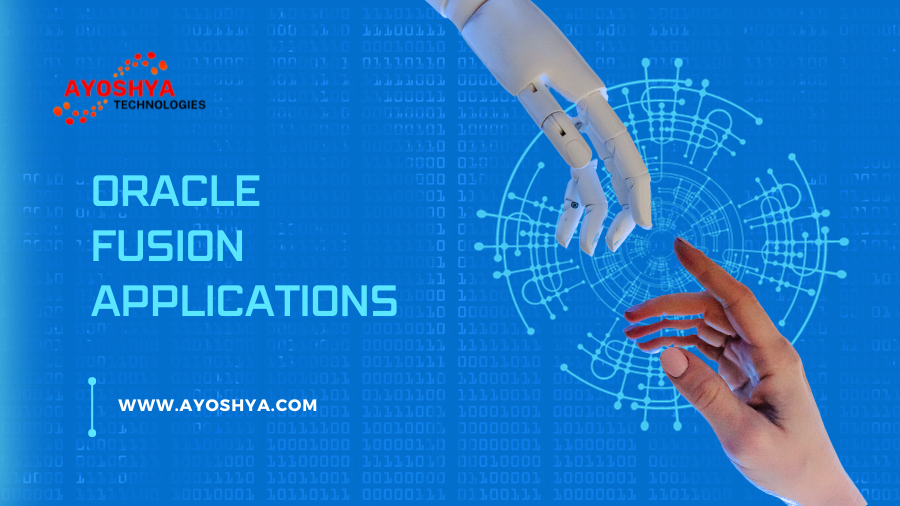A Deep Dive into Oracle Fusion Applications
Unlocking Efficiency: A Deep Dive into Oracle Fusion Applications
In the realm of enterprise solutions, Oracle Fusion Applications stand tall, promising a seamless integration of business processes and unparalleled efficiency. Let’s embark on a journey to explore the evolution, key modules, advantages, and real-world impact of Oracle Fusion Applications.
1. Introduction
The digital landscape is evolving, and so are the demands of businesses. Oracle Fusion Applications have emerged as a comprehensive solution to meet these evolving needs, promising integrated and efficient business processes.
2. The Evolution of Oracle Fusion Applications
2.1 From Legacy Systems to Integrated Solutions
Fusion Applications mark a departure from traditional, siloed enterprise systems. They bring together various functions, promoting synergy across the organization.
2.2 Oracle’s Vision for Seamless Business Processes
Oracle envisions a business environment where data flows seamlessly between different departments, optimizing decision-making and enhancing overall efficiency.
3. Key Modules of Oracle Fusion Applications
3.1 Human Capital Management (HCM)
Oracle Fusion HCM integrates core HR processes, talent management, and workforce management, providing a holistic view of an organization’s most valuable asset—its people.
3.2 Customer Relationship Management (CRM)
The CRM module focuses on customer experience, enabling organizations to streamline sales processes, enhance customer engagement, and drive business growth.
4. Advantages of Oracle Fusion Applications Over Traditional ERP
4.1 Unified User Experience
Unlike traditional ERP systems, Fusion Applications offer a unified user experience, simplifying navigation and reducing the learning curve for end-users.
4.2 Cloud-Based Flexibility and Scalability
Being cloud-based, Fusion Applications provide flexibility and scalability, allowing businesses to adapt to changing needs and scale operations seamlessly.
5. Implementing Oracle Fusion Applications: Best Practices
5.1 Comprehensive System Analysis
Before implementation, a thorough analysis of existing systems is crucial. This ensures a seamless integration process and identifies areas for optimization.
5.2 Change Management for Seamless Transition
Change is inevitable, and effective change management strategies are vital for a smooth transition to Fusion Applications.
6. Impact on Business Productivity and Collaboration
6.1 Streamlining Workflows Across Departments
Fusion Applications break down departmental silos, streamlining workflows and fostering collaboration between different segments of an organization.
6.2 Facilitating Real-time Collaboration
Real-time collaboration becomes a reality with Fusion Applications, enabling teams to work together efficiently regardless of geographical locations.
7. Oracle Fusion Applications vs. Competitors: A Comparative Analysis
7.1 Performance and Customization Capabilities
Fusion Applications boast superior performance and customization capabilities compared to competitors, offering tailored solutions for diverse business needs.
7.2 Cost-effectiveness and Total Cost of Ownership (TCO)
Despite the advanced features, Fusion Applications are designed to be cost-effective in the long run, with a lower total cost of ownership compared to maintaining traditional systems.
8. Success Stories: Organizations Thriving with Oracle Fusion Applications
8.1 Case Studies of Successful Implementations
Explore real-world examples of organizations that have successfully implemented Fusion Applications, showcasing the diverse industries benefiting from this integration.
8.2 Positive Outcomes and Return on Investment
From increased efficiency to improved customer satisfaction, the positive outcomes and return on investment speak volumes about the impact of Fusion Applications.
9. Challenges and Solutions in Oracle Fusion Applications Adoption
9.1 Addressing Integration Challenges
Integration challenges may arise, but proactive measures and collaboration with experienced implementation partners help address these hurdles.
9.2 Continuous Training for Optimal Utilization
Continuous training ensures that organizations harness the full potential of Fusion Applications, maximizing the benefits for all users.
10. Future Trends in Oracle Fusion Applications
10.1 Artificial Intelligence and Predictive Analytics
The future holds exciting possibilities with the integration of artificial intelligence and predictive analytics into Fusion Applications, empowering businesses with data-driven insights.
10.2 Enhanced Mobile and Remote Capabilities
In response to the evolving work landscape, Fusion Applications are set to enhance mobile and remote capabilities, catering to the needs of modern businesses.
11. Tips for Maximizing the Benefits of Oracle Fusion Applications
11.1 Regular Updates and Patch Management
Regular updates and effective patch management are crucial for keeping Fusion Applications secure and optimized.
11.2 Leveraging Oracle Support and Community Resources
Oracle provides robust support and community resources, and organizations are encouraged to leverage these to address challenges and stay updated.
12. Conclusion
In conclusion, Oracle Fusion Applications represent a paradigm shift in enterprise solutions, offering a holistic approach to business processes. The advantages, success stories, and future trends position Fusion Applications as a cornerstone for businesses aiming to unlock efficiency in the digital age.
FAQs
Q1: How does Oracle Fusion Applications ensure data security?
It prioritize data security through robust encryption, access controls, and regular updates to address emerging threats.
Q2: Can small businesses benefit from Fusion Applications?
Yes, Fusion Applications are designed to scale, making them suitable for businesses of varying sizes, including small and medium enterprises.
Q3: What challenges might businesses face during the implementation of Fusion Applications? Integration challenges may arise during implementation, but proactive measures and collaboration with experienced partners help overcome these hurdles.
Q4: How does it impact collaboration within an organization?
Fusion Applications break down silos, streamlining workflows, and fostering real-time collaboration between different departments.
Q5: Is continuous training necessary for users of Fusion Applications?
Yes, continuous training ensures that users stay updated on new features and functionalities, maximizing the benefits of Fusion Applications.
Read More:



